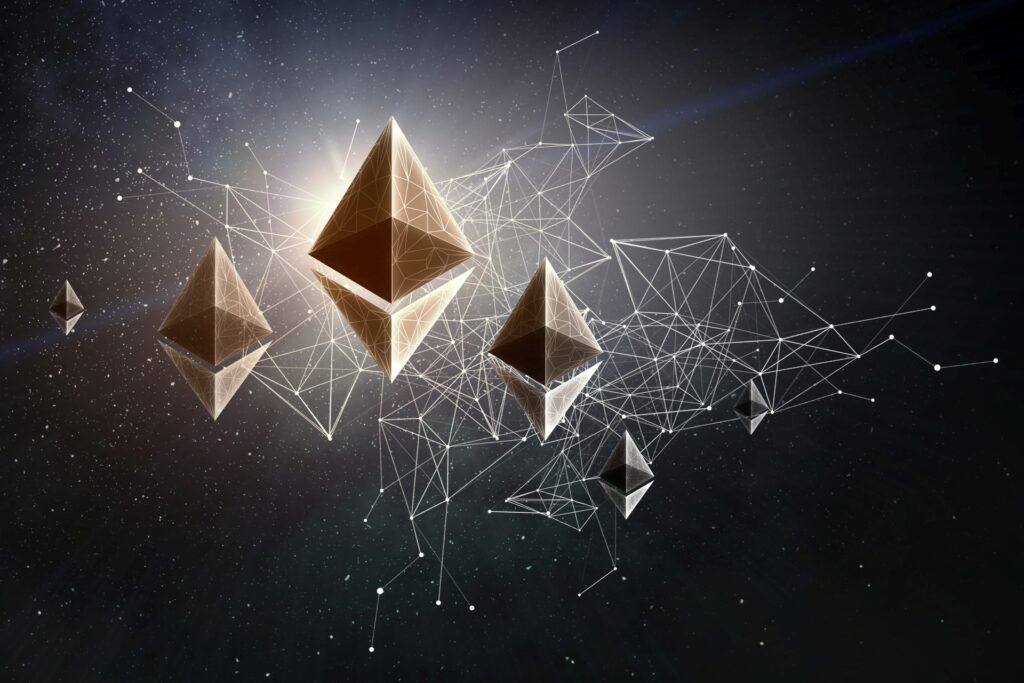In developer communities, the question of whether or not blockchains can grow has been talked about for years. Public blockchain networks like Ethereum need several nodes to validate transactions, which limits their ability to succeed. However, if blockchains and the decentralized apps that run on them are to be used by a large number of people, they need to be able to grow with the population. In addition to layer 2 blockchains, sharding is another way to increase the number of users that Ethereum can support. The idea behind Ethereum sharding is to split the main blockchain into smaller pieces so that each node only has to verify a small set of transactions.
But what is Ethereum sharding, and how can shard chains improve the ability of a network to grow? Let’s try to get it.
What’s Sharding?
Ethereum sharding is the process of dividing the whole Ethereum network into pieces called “shards.” Each shard would have its own independent state, which means that each account balance and smart contract would be different. At the moment, there is only one proof-of-work blockchain for Ethereum, and all nodes store all transaction data. The high level of security that comes from each node checking all blocks comes at the cost of throughput, especially when many users are sending transactions. Ethereum sharding might be able to help with that.
Sharding is definitely the most complicated way to make Ethereum bigger. It is also the one that is expected to come out last. This will give developers enough time to plan it out and test it in real-world settings thoroughly. Each shard chain comprises several shards, which are made up of a number of nodes. Each shard of the puzzle has its own tasks and responsibilities. In addition to this, smart contracts could also be run on shards. Some shards could also just be used to store data, while others would do the work. Since sharding has never been used by a blockchain before, the Ethereum community is still figuring out how it will work.
Why is sharding necessary for Ethereum?
Ethereum sharding could make it easier to run the full nodes. Experts say that Ethereum full nodes already take up at least five terabytes of space, which is about ten times of what the average computer can hold. And as time goes on and more people join the platform, the nodes will only get bigger and harder to run.
In computer science, sharding is a common way to make applications bigger so they can handle more data. If you can do sharding right in Ethereum, which is still a big if, each user could store only a part of the history of changes to the database instead of the whole thing, which is how a blockchain usually works.
What are the features of Ethereum sharding?
Ethereum sharding is an excellent way to grow if you want to keep things decentralized since the other way to grow is to make the database bigger. However, this would make it harder for network validators to use Ethereum because they would need powerful computers that cost a lot of money. With Ethereum sharding, validators won’t have to store all of this data themselves. Instead, they can use data techniques to confirm that the data has been made available by the network as a whole. This makes it much cheaper to store data on layer 1 because less hardware is needed.
Sharding will make it possible to run Ethereum on a personal computer or phone in the future. So, more people should be able to participate in a sharded Ethereum or run clients. This will make the network safer because the smaller the attack surface area, the more decentralized it is. With sharding, you won’t need as much hardware to run clients on your own, so you won’t have to use any middleman services. And if you can, you might want to run more than one client. This can help in enhancing the health of the network by removing even more potential failure points.
Various upgrades and shards – How are they related?
The Beacon Chain and Shards
The logic for keeping shards safe and in sync is all in the Beacon Chain. The Beacon Chain will keep track of the network’s stakeholders and tell them which shards to work on. It will also make it easier for shards to talk to each other by getting and storing shard transaction data that other shards can use. This will give shards a snapshot of the state of Ethereum so that everything stays up to date.
The Merge and Shards
By the time more shards are added, the Beacon Chain and proof-of-stake will already be protecting Ethereum Mainnet. This makes it easier to build shard chains with the help of layer 2 solutions that boost the scalability.
It’s still not clear if Mainnet will be the only “smart” shard that can run code, but if it is, the decision to add more shards can be made again as needed.
What are the problems with Ethereum sharding?
Sharding sounds excellent in theory, but there are a number of ways that individuals could use it against you. The single-shard takeover attack is one type of attack. In this scheme, an attacker takes over most of the block producers in a shard to make a malicious shard that can send invalid transactions. As a solution, the Ethereum core developers point to random sampling. But this is still under processing.
Also, people still don’t know how to talk between the shard chains and the Beacon Chain. Ethereum wants to use a “receipt paradigm,” in which the Beacon Chain only stores the receipts of transactions on shard chains. As with many other questions about Ethereum sharding, the tricky part is in how it’s done.



